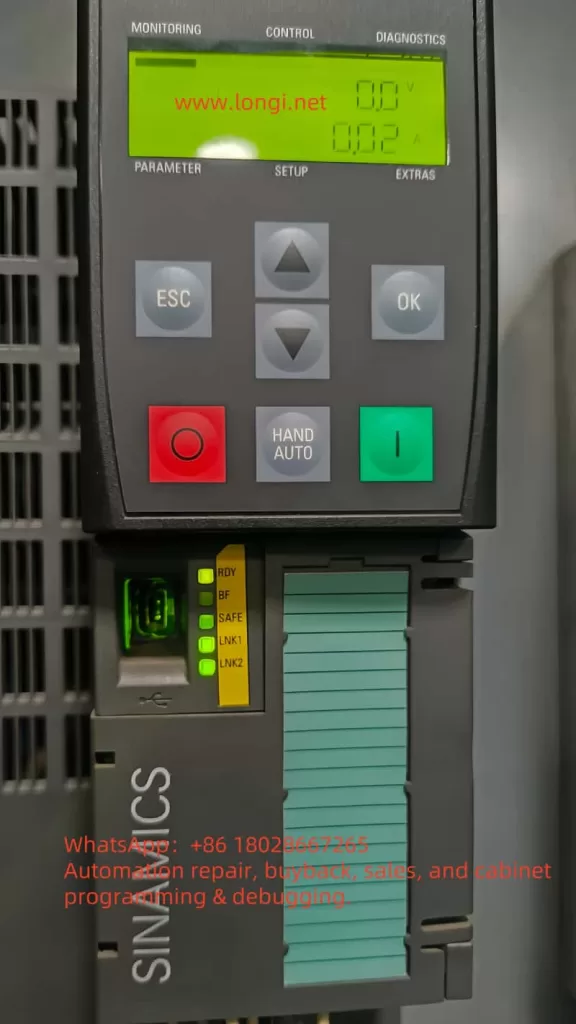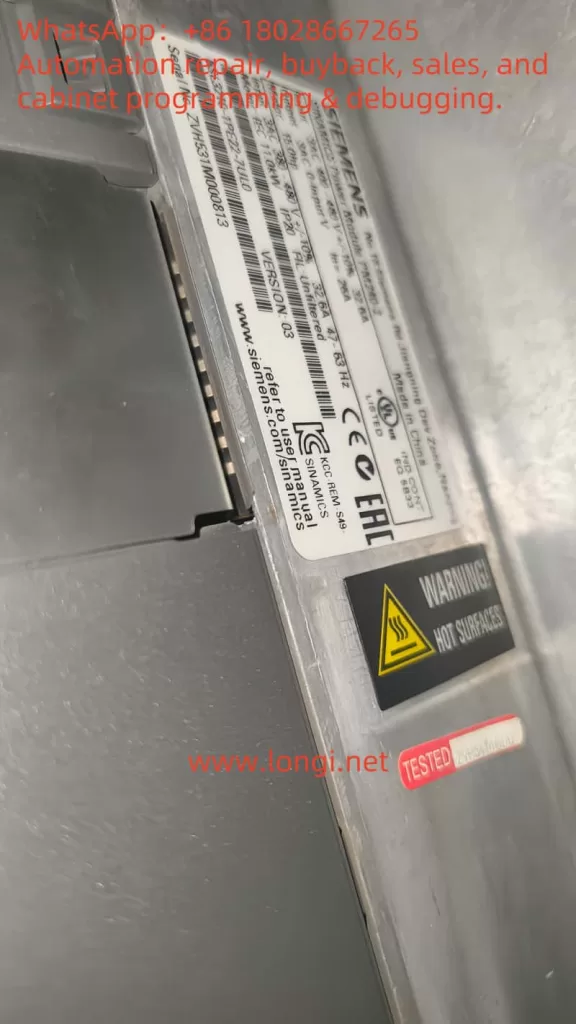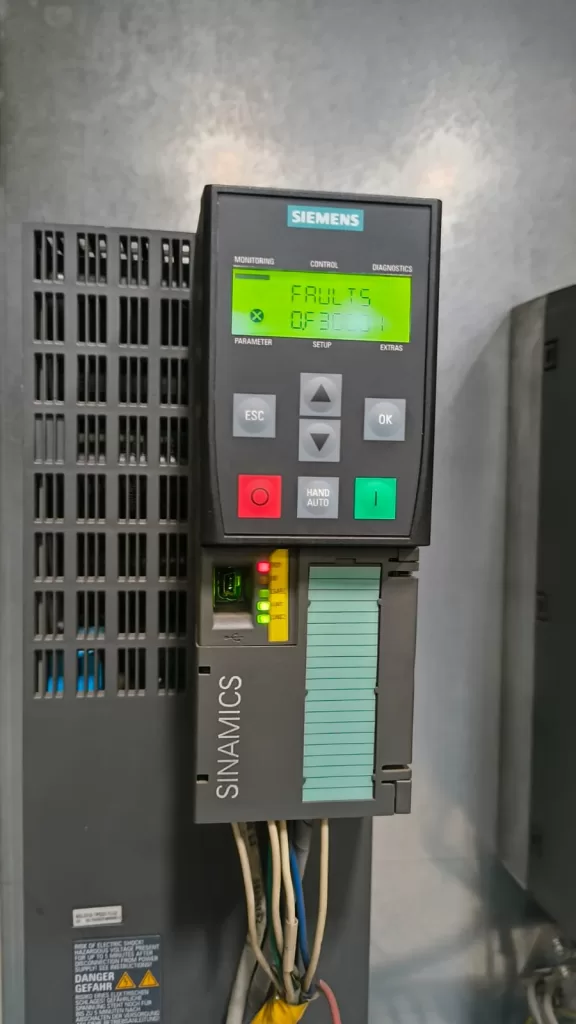1. Introduction
The SINAMICS G120 frequency converter series by Siemens is widely used in industrial automation for its modular structure, flexible control modes, and robust diagnostics. However, during operation, users may occasionally encounter fault codes such as F30001, which can interrupt production or system functionality. This article provides an in-depth explanation of the F30001: Power Unit Overcurrent fault, covering its causes, field-level troubleshooting, internal repair tips, and preventive strategies.

2. Meaning of Fault Code F30001
Definition
F30001 refers to a severe fault in the power module:
“Overcurrent detected by power unit. Output is shut off immediately to protect internal components.”
This is a protective measure triggered when the output current exceeds the safe limit of the power module (typically IGBT modules), preventing hardware damage.
Internal Detection Mechanism
The converter continuously monitors the output current of each phase (U, V, W). The fault is triggered under these conditions:
- Phase current exceeds the hardware threshold.
- Significant imbalance between the output phases.
- Motor stall or sudden torque demands exceed current capacity.
- Control loop errors cause false current surges.
Diagnostic parameter r0949 can be used to identify the affected phase (0=unknown, 1=U, 2=V, 3=W, 4=DC bus current).

3. Common Causes of F30001
A. Load-Side Problems
- Motor winding short circuit or insulation breakdown.
- Damaged or incorrectly connected output cables.
- Motor blocked, causing high inrush current.
- Converter powered on without connecting a load (not supported in some configurations).
B. Parameter Misconfiguration
- Acceleration/deceleration time too short (p1120/p1121).
- Incorrect motor parameters (p0300, p0310) lead to wrong current ratings.
- Overcurrent response time (e.g. p0974) set too aggressively.
C. Power Supply Issues
- Unstable or unbalanced 3-phase input.
- Contactors dropping voltage momentarily.
- Absence of line reactors leading to high inrush current.
D. Internal Hardware Failures
- Damaged IGBT power modules.
- Current sensing circuitry failure.
- Loose connections or dry solder joints on the driver board.

4. On-Site Troubleshooting and Recommendations
Step 1: Basic Electrical Checks
- Use an insulation tester to verify that motor windings have no shorts to ground (usually >1MΩ).
- Inspect cables for mechanical damage, aging, or moisture.
- Verify correct wiring (star or delta) per motor nameplate.
Step 2: Optimize Control Parameters
- Extend acceleration time (p1120) to 5–10 seconds.
- Correct the motor’s rated current value (p0310).
- Perform motor identification (p1910 = 1) before first start-up.
- Avoid no-load testing on some modules.
Step 3: Reset and Re-Test
- Clear the fault on the operator panel or through fieldbus.
- Re-energize and monitor output behavior.
- If fault reoccurs, move to deeper diagnostics.
5. Internal Hardware Inspection (For Qualified Personnel Only)
⚠️ WARNING: Wait at least 5 minutes after power-off to allow DC bus capacitors to discharge.
Disassembly & Inspection:
- Open the PM240 cover and check for signs of damage or burn marks.
- Measure resistance between U/V/W and DC terminals to detect IGBT short circuits.
- Visually inspect drive board connectors and test points for cold joints or oxidation.
- If possible, swap power modules or control boards for cross-verification.
6. Preventive Maintenance Tips
| Task | Frequency |
|---|---|
| Clean dust and vents | Monthly |
| Tighten terminal connections | Quarterly |
| Check cable insulation | Semi-annually |
| Monitor current values (r0051) | Continuously |
| Configure tolerant protection | Initial setup |
7. Conclusion
F30001 is a typical fault in SINAMICS G120 that stems from overcurrent events. With proper analysis, parameter optimization, and electrical inspection, most such issues can be resolved at the field level. Technicians must understand not only the electrical behavior of the load but also how the inverter monitors and reacts to current flow.
If the issue persists after external causes are ruled out, contacting our technical support or replacing the power module may be necessary to ensure safety and long-term reliability.
